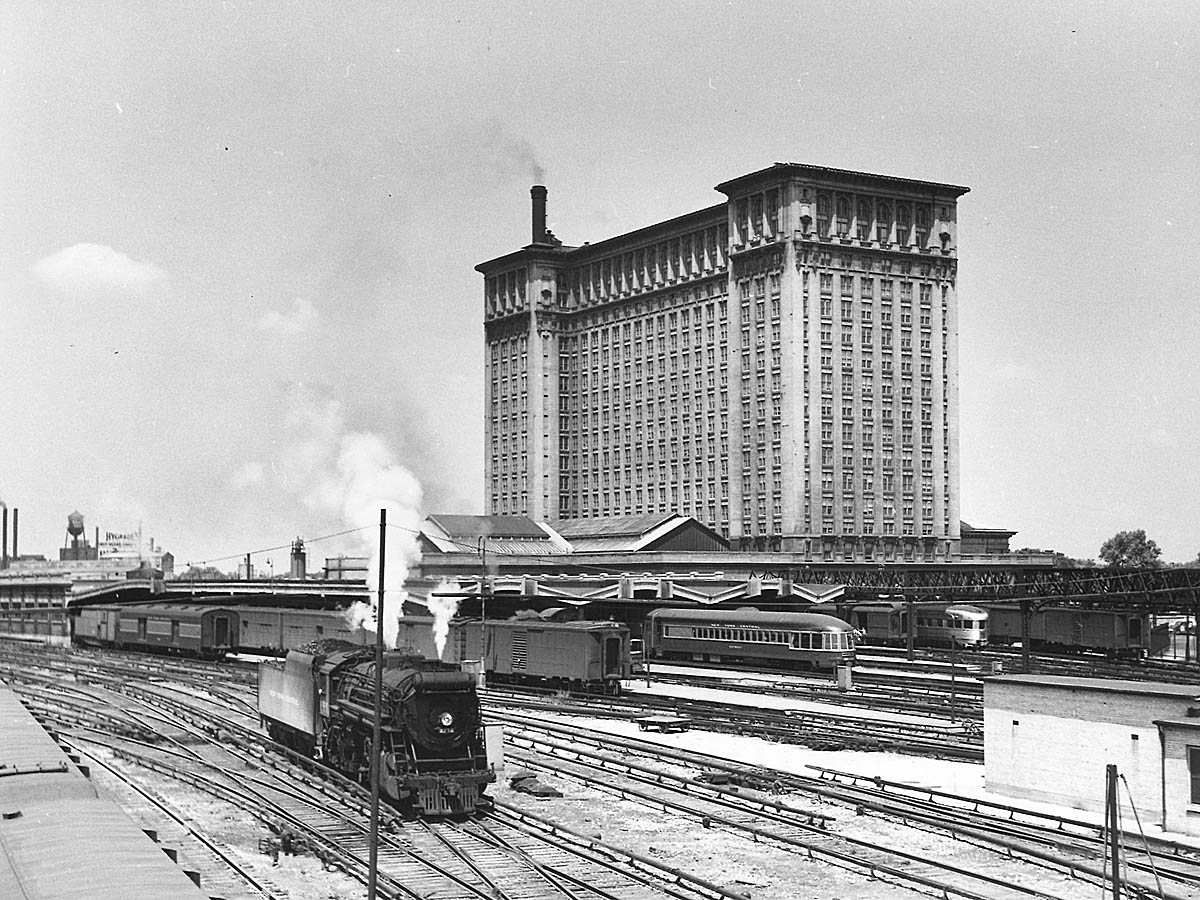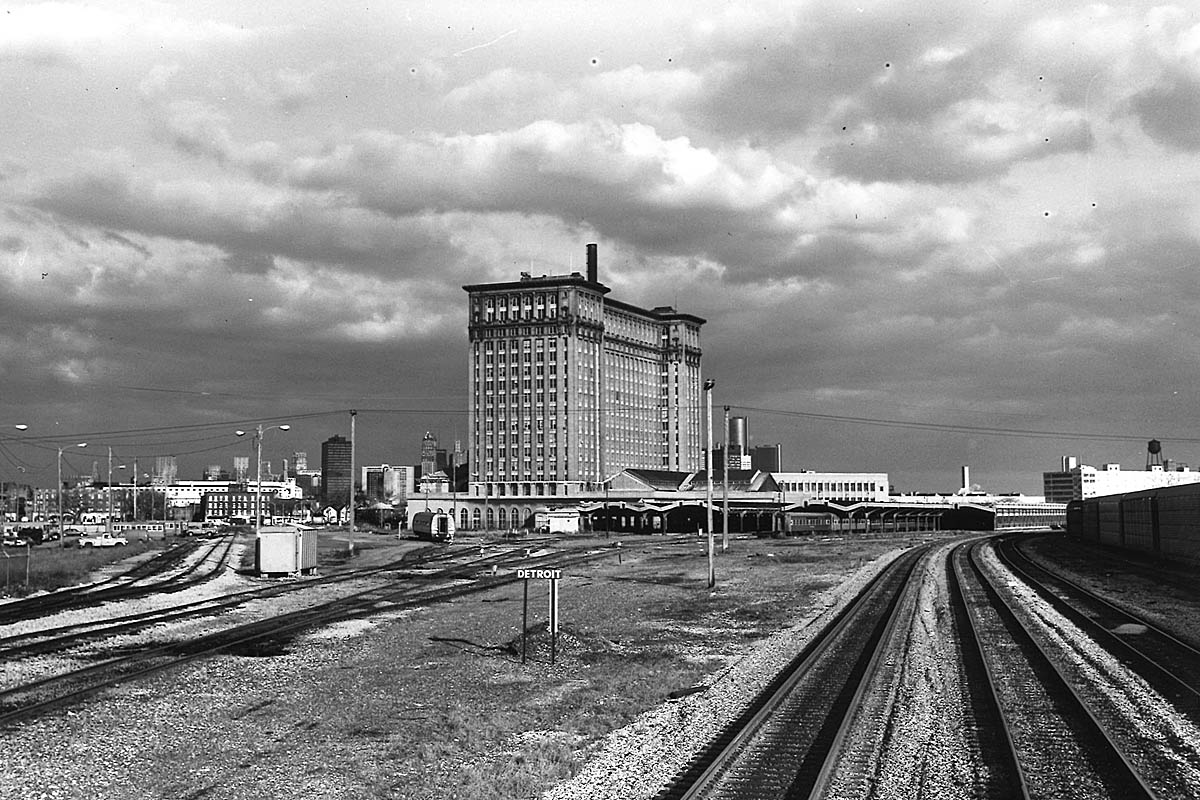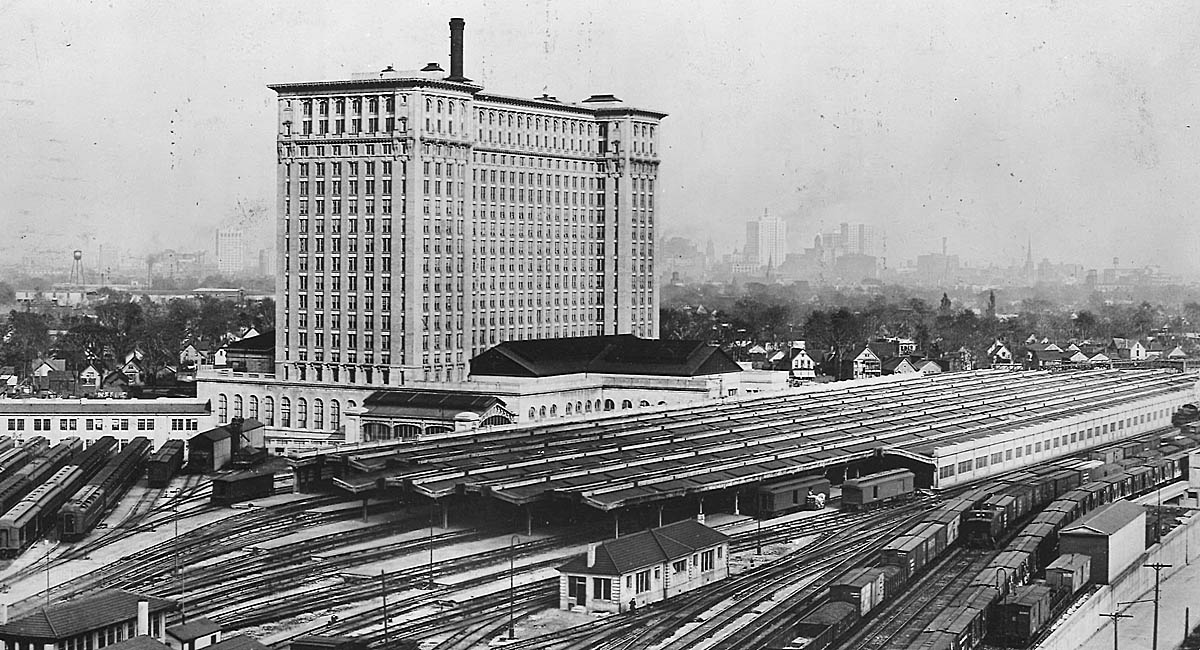
DETROIT – The news this week that the Ford Motor Co. has purchased Detroit’s crumbling but historic Michigan Central Station indicates a happy ending for one of America’s most notoriously neglected big-city train stations.
Ford purchased the building from the Manuel Moroun family, billionaire owners of a trucking and logistics empire, which includes the Ambassador Bridge linking Detroit with Windsor, Canada. A purchase price for the station has not been disclosed.
A Ford spokesman said the company would announce detailed plans for the site at a June 19 press conference and open house. It is presumed the project will include renovation of the passenger terminal and its 18-story office building. At a press conference Monday, Matthew Moroun, heir to the Moroun fortune, said Ford’s “blue oval will adorn the building.”
In its invitation to the open house sent on Monday, Ford said, “it will be a historic day for Detroit, the auto industry and the future of Ford – the start of a new era of innovation and mobility.”
The assumption is that Ford will include the station complex in a new technology campus dedicated to developing the next generation of self-driving and electric vehicles. Ford recently transferred approximately 200 members of its mobility team to a nearby industrial site, part of Detroit’s rapidly reviving westside Corktown neighborhood.
“The building will become a beacon of Ford’s future,” says Michelle Krebs, executive analyst for Cox Automotive’s Autotrader. “It is expected to be where Ford develops its high-tech vehicles of the future. The move into Detroit also has a practical purpose in luring bright, young talent to the company who prefer a hip urban workplace to sterile cubicles of the suburbs.”
In Michigan Central Station, Ford is acquiring one of railroading’s great architectural monuments. Two firms designed the 1913 station: St. Paul, Minn.-based Reed & Stem, of New York’s Grand Central Terminal fame; and New York-based Warren & Wetmore, known for such hotels as the Biltmore and Ritz-Carlton in Manhattan.
When the station opened, the Michigan Central was already a subsidiary of the New York Central, but a proud and independent one. With its 19th century roots in Boston’s financial aristocracy, the Michigan Central wanted to build monuments of its own. In a sprawling two-part series in the August and September 1978 issues of Trains Magazine, authors Garnet R. Cousins and Paul Maximuke called it “the proud symbol of a mighty railroad.”

The station was also unusual by virtue of its connection to the Detroit River Tunnel Co., which carried the Michigan Central main line beneath the Detroit River just a mile east of the station, linking the railroad with its Canada Southern affiliate. The tunnel opened in October 1910. The long grade necessary for the tunnel necessitated Michigan Central Station’s location more than a mile west of downtown Detroit at the corner of Vernor Highway and Michigan Avenue.
In its heyday, Michigan Central Station was as vital as any in the Midwest. In 1929, the station saw more than 90 arrivals and departures each day. Ultimately the depot could boast a number of famous NYC trains, including the Mercury, Wolverine, and, at the top, the daily Twilight Limited, originally an all-Pullman parlor-car train to Chicago. The station thrived through the postwar streamliner era.
However, that distance from downtown proved to the station’s Achilles heel as passenger traffic faded in the 1950s and ’60s. The terminal was simply too far away to be convenient. Service fell to a handful of trains under Penn Central and Amtrak, to the point where the latter simply abandoned the station in 1988, opting to mainly serve the Detroit market in Dearborn and Pontiac. Amtrak does maintain a Detroit station on Woodward Avenue, north of downtown, however.
The Moroun family bought the depot in 1992. Once it was no longer used, the station quickly became a prominent eyesore, a hangout for gangs and homeless, virtually all its windows broken, many of its architectural details vandalized. The station’s deterioration mirrored the general decline of Detroit’s industrial infrastructure and became a darling of “ruin porn,” symbolized by websites and tours trolling the remnants of lost empire.
In 2009, the Detroit City Council ordered the Morouns to raze the Station, a directive the family ignored. At some point the owners did try to seal off the property with a substantial chain-link and barbed-wire fence, and in recent years has replaced windows in the office tower.
Ironically, Michigan Central Station’s long, painful drama has apparently served a purpose. At least it still stands, ready to receive the estimated billion-dollar investment Ford appears ready to make. As Autotrader’s Krebs explains, Ford has historical ties to the neighborhood. “The Ford family’s ancestral roots go back to County Cork, Ireland, namesake of the Corktown neighborhood,” she explains. “Henry Ford started his early car company in Detroit, later moving it to Dearborn.”
Now, it appears Detroit will once again be able to take pride in one of its greatest landmarks, even if none of Amtrak’s six daily Wolverine Service trains stop there.















My father told me decades ago how he used to board a train in Scranton, PA to go see customers in Detroit. He preferred the train – nice dinner, no need to find a hotel if he came by plane, breakfast in the morning and then off the train to head to his appointments. Assuming I got it right, would this have been where he got off?
Excellent article with the historic photos, Mr. Keefe. By the way, did anyone see this coming? I really enjoy these good-news rail oriented surprises. Thank you, Ford.
Great memories for The New York Central which was pretty big in Michigan.Have a dvd where this great terminal is featured
OK, I stand corrected…you don’t like the train station and you don’t like Ford Motor Company either. They made a $1.7 billion profit last year. I think that would fund rebuilding the station quite nicely. And Ford Motor Company does not own the Lions, some members of the Ford family do. That is a different animal. What they do with their money is none of my business, and should be none of yours either, unless you are a stock holder.
GARY — You ask, I really dislike that building, don’t I? Yeah, I kind of dislike it, think it’s vastly over-rated and in horrid condition. I could name many historic buildings in Detroit that are better designed and built, to say nothing of not having been waterlogged homeless encampments for four decades. Detroit has Fisher Building, Albert Kahn Building, Buhl Building, Penobscot Building, Fox Theater, Public Library, Art Institute, Engineering Society, Masonic Temple, the Palmer Park residential district, the Fisher Mansion (well, that one’s a wreck, too), and others, and that’s just the incorporated city, not including the ‘burbs. The real point is not whether or not I like it, but how many hundreds of millions of dollars of FoMoCo $$$$ will be poured into a bottomless pit. FoMoCo is in a ruthless competitive environment with GM, Toyota, Honda etc. I don’t see how FoMoCo can afford to be in the building restoration business when the oversized building is way past salvation. Do I think FoMoCo has engineers etc. to look into what they’re buying, you ask. I think the Ford family has an ego problem, believing if they can build cars they can do whatever else in their home town. For the contraindication, look at their football team. What is it, one postseason victory in 30 or 35 years, something like that?
Charles, you really hate that building, don’t you? Don’t you think Ford has had engineers and architects looking over that building for months? If there are safety issues in the building, there are things such as building codes that they will be required to meet before a certificate of occupancy is granted. And they certainly are aware of that. Ford has built or renovated buildings all over the world. This is not something they are entering into lightly.
A honorable mention for the Buffalo Central Terminal.
TROY – Yes it will be a great boon to the area. But it will severely stress Ford Motor Company’s finances in the process.
I hope they keep a section for potential restoration to rail use.
If Ford can do this right it will be a boon for the area, it is a huge building and if it is full of people working it will do wonders for the area. I hope and will Ford all the success with this project.